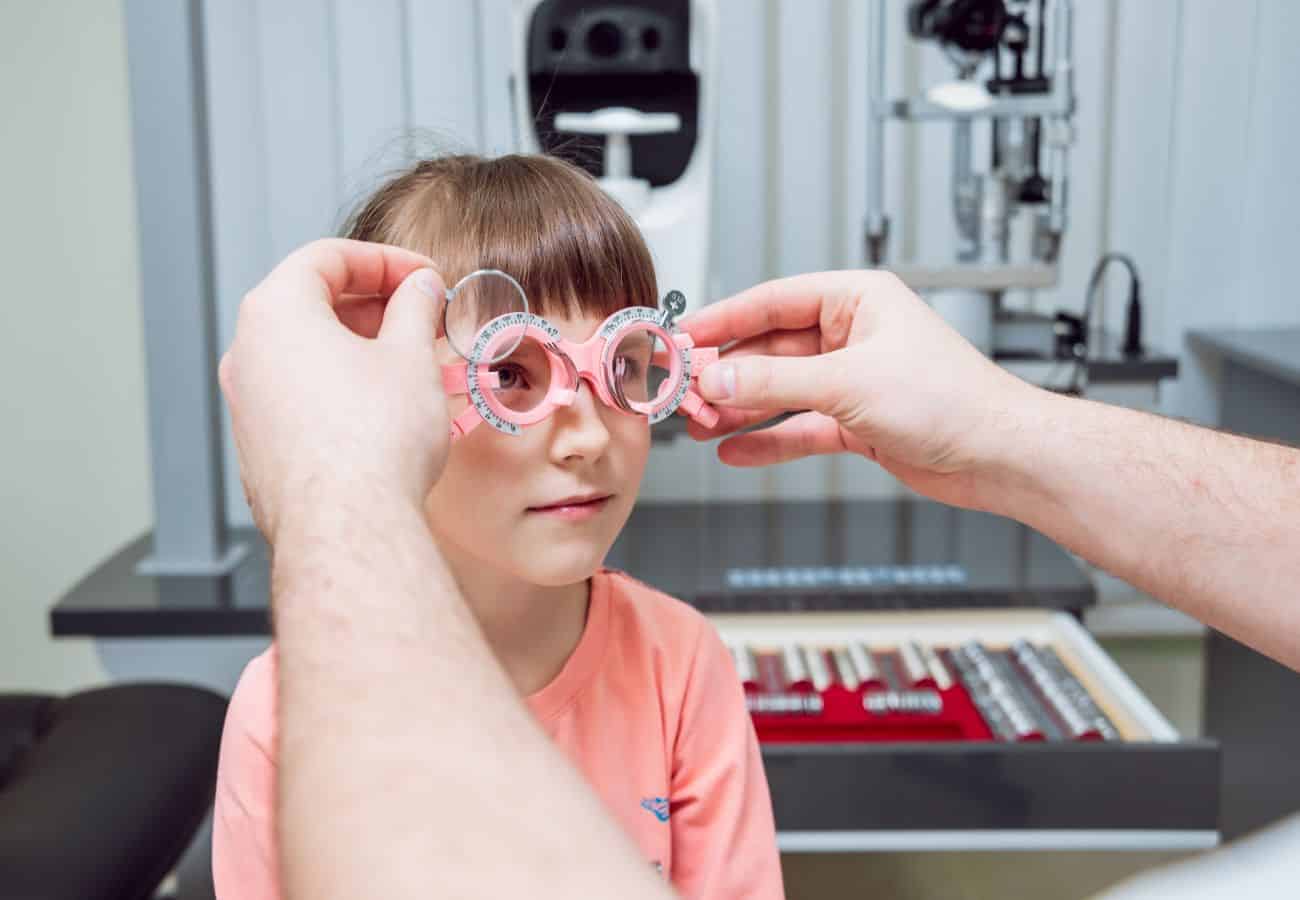Currently, in ophthalmology we have optical aids for low vision that improve the quality of life of patients suffering from visual limitation. Depending on the specific needs of each person, we have a range of options that facilitate the performance of daily activities that require seeing objects at a close, intermediate or distant distance.
En Área Oftalmológica Avanzada We explain what visual aids for low vision consist of, and what options we have.

What are low vision aids?
It is a set of techniques focused on patients with low vision whose main objective is that they can develop, in better conditions, daily activities through visual exercises and/or the use of visual aids such as specific optical systems.
The aid is produced through the magnification and minification technique, which is measured through the maximum level of visual acuity achieved necessary to perform a given task.
Who can perform visual aids?
The most suitable professional to perform visual aids is the low vision expert, who can rely on the own treatments of the visual therapy unit.
To guarantee the success of these aids, an ophthalmological control must be carried out during this process to guarantee the visual health of the patient.
In an ideal environment, where the patient can safely receive visual aids for low vision, it is go to an ophthalmological center of recognized prestige where they have a low vision and vision therapy unit.
Types of visual aids
There are different types of optical aids that can be applied depending on the needs of each patient. Among the different resources to treat low vision we find, but they are not limited to:
Telescope
It is used to enlarge the size of those objects that are far away. The telescope can be manual or mounted on glasses, in which case we are talking about prismatic glasses.
The telescope can be monocular, if it is used only in one eye, or binocular if it is used in both eyes. If the telescope is mounted on glasses it is especially useful for static activities such as watching television while handheld telescopes are more useful for dynamic activities such as window shopping from a distance. Keep in mind that cannot be used on the move.
Microscopes
These are high power converging or positive lenses, usually aspherical lenses, which mount over glasses for regular use or by clip for occasional use and are especially indicated for patients who need to improve their near vision. In this way, those tasks that require a close vision, although they have the disadvantage of needing a very short distance to work properly.

Magnifying glasses
The optical loupe increases the size of objects, allowing short working distances on an occasional basis. There are different types of magnifiers: focusable, manual, fixed with support, glasses magnifiers, pocket magnifiers, etc. The main limitation of loupes is that as their power increases, the campor vision.
Telemicroscopes
Through the telemicroscope ampbundles the retinal image size of nearby objects, without needing accommodation for it. Through this system we enhance the tasks at medium and long distance.
The pros and cons of this technique are the same as in the telescope to which the close-up lens is placed, with the only exception that the working distance varies: in this case, it is reduced as the power in the close-up lens increases.
Electronic systems
The electronic systems are integrated by an electronic digital magnifier that acts as a scanner, magnifying the image up to 28 times. It is a very versatile technology since it achieves different sets of contrasts, resolutions and tones.
Therapeutic filters
They prevent glare, adapt to light and increase contrast through the absorption of certain wavelengths of light. They also get a AV visual acuity improvement. It is worth noting their colors, which can make them attract a bit of attention.
From the almost complete range of therapeutic filters that currently exist, two stand out:
Polarized filters
They further reduce glare by modify the direction of light wave selectively.
Photochromic filters
These filters react based on the level of sunlight they are exposed to. They are useful in patients with problems adapting to variations in the degree of illumination.
Practical advice for patients with low vision
Apart from low vision aids, the patient affected by this problem can perform a series of practices to improve your daily tasks:
- Diminish the sparkles both indoors and outdoors. It is important to graduate the lights inside, so that they do not produce flashes. Outside our residence, vision should be protected by the use of large hats or wrap-around glasses.
- Give more lighting to the house, replacing the points of light by others more luminous and adding more light bulbs around the house.
- Use markers, felt-tipped pens and pencils when making notes or writing the shopping list.
- Increase contrasts in our home, for example by putting white plates on a dark tablecloth.
In addition, we show you with an example some tips from the American Ophthalmological Society, which are essential to improve the quality of life of the patient:
- Low vision analysis performed by an ophthalmologist and an optometrist.
- Device prescription to use in each case.
En Área Oftalmológica Avanzada we are experts in visual aids for low vision. If you suffer from problems of this type, do not hesitate to contact us, we will gladly assist you!


